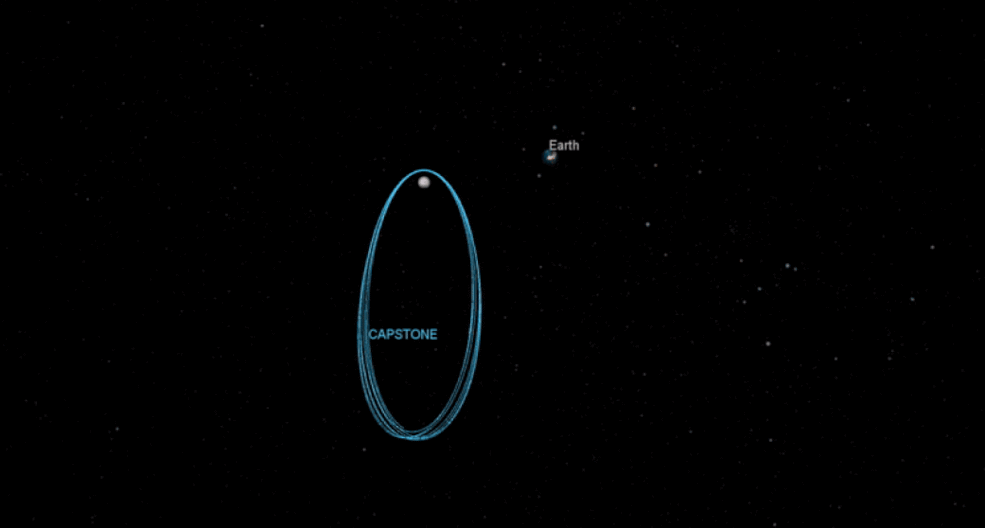
NASA's little CAPSTONE cubesat is making good progress on its long journey to the moon.
The 55-pound (25 kilograms) CAPSTONE launched to Earth orbit aboard a Rocket Lab Electron booster on Monday (June 28). CAPSTONE remains in orbit, attached to Rocket Lab's Photon spacecraft bus, but it's getting farther and farther from its home planet.
"The moon just got a little closer! We've successfully ignited Photon's HyperCurie engine a 6th time, raising #CAPSTONE's apogee to 69,680 km [43,300 miles]. Since we combined 2 burns into 1 for this maneuver, only 1 final burn remains to set CAPSTONE on a ballistic lunar transfer to the moon," Rocket Lab representatives said via Twitter this morning (July 1). (Apogee is the farthest point from Earth in a satellite's elliptical orbit.)
Related: Why it'll take NASA's tiny CAPSTONE probe so long to reach the moon
That final burn, which will accelerate the Photon-CAPSTONE duo to 24,500 mph (39,400 kph), could occur as early as Monday (July 4), Rocket Lab said in another tweet today. Within 20 minutes of the burn, Photon will deploy CAPSTONE, and the microwave-oven-sized cubesat will make its own way to the moon.
That trip will be a long and circuitous one, with CAPSTONE getting as much as 810,000 miles (1.3 million km) from Earth before being pulled back in by the gravity of the Earth-moon system. Mission planners chose this indirect path because it's highly fuel-efficient, and they need efficiency after launching aboard the 59-foot-tall (18 meters) Electron, which is designed to deliver small satellites to Earth orbit.
Finally, on Nov. 13, the spacecraft will slip into a near-rectilinear halo orbit (NRHO) around the moon, a highly elliptical path that will take it within 1,000 miles (1,600 km) of the lunar surface on its closest path and as far away as 43,500 miles (70,000 km).
Get the Space.com Newsletter
Breaking space news, the latest updates on rocket launches, skywatching events and more!

No spacecraft has ever occupied a lunar NRHO before, and that's why CAPSTONE is going there. NASA plans to put the Gateway space station, a key part of the agency's Artemis program of lunar exploration, into an NRHO and is using CAPSTONE to test the orbit's stability.
CAPSTONE will also perform some navigation and communications tests during its time at the moon. The latter trials will be performed in conjunction with NASA's Lunar Reconnaissance Orbiter, which has been studying the moon up close since 2009.
CAPSTONE (short for "Cislunar Autonomous Positioning System Technology Operations and Navigation Experiment") is a NASA mission, but the agency isn't in charge of the day-to-day work. Colorado company Advanced Space operates the mission, having won a $20 million NASA contract for this work in 2019.
Mike Wall is the author of "Out There" (Grand Central Publishing, 2018; illustrated by Karl Tate), a book about the search for alien life. Follow him on Twitter @michaeldwall. Follow us on Twitter @Spacedotcom or on Facebook.
Join our Space Forums to keep talking space on the latest missions, night sky and more! And if you have a news tip, correction or comment, let us know at: community@space.com.

Michael Wall is a Senior Space Writer with Space.com and joined the team in 2010. He primarily covers exoplanets, spaceflight and military space, but has been known to dabble in the space art beat. His book about the search for alien life, "Out There," was published on Nov. 13, 2018. Before becoming a science writer, Michael worked as a herpetologist and wildlife biologist. He has a Ph.D. in evolutionary biology from the University of Sydney, Australia, a bachelor's degree from the University of Arizona, and a graduate certificate in science writing from the University of California, Santa Cruz. To find out what his latest project is, you can follow Michael on Twitter.









